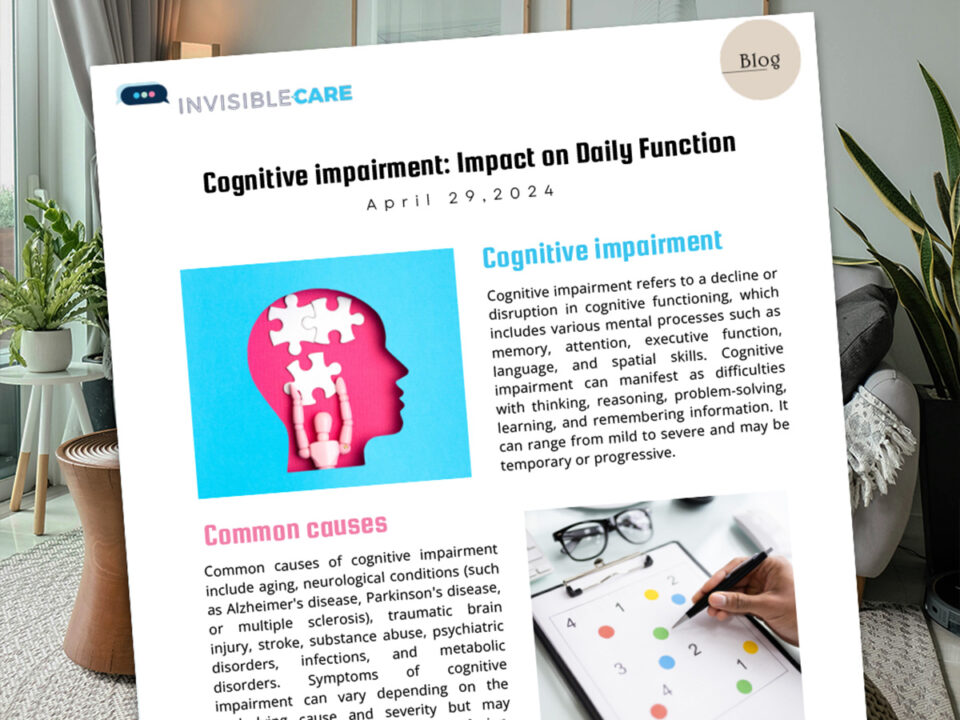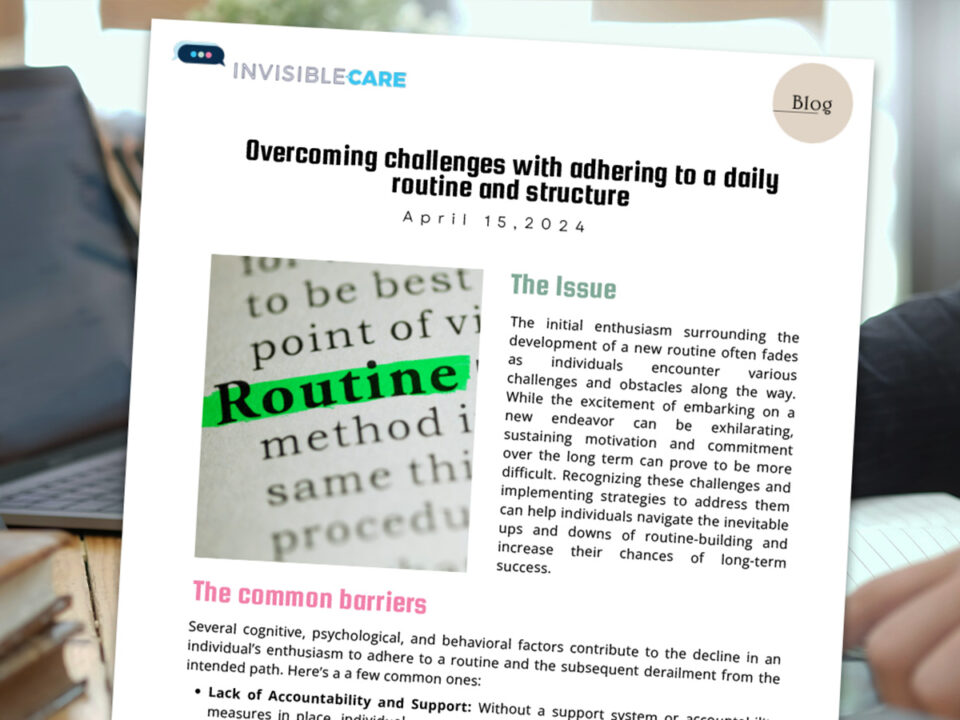
How Does Attendant Care Impact a Personal Injury claim
January 8, 2024
Advantages of Remote Cueing and Prompting
February 5, 2024
Remote care
Remote care using technology offers a wide range of benefits for both patients and healthcare providers. The adoption of remote care technology has increased significantly, especially in recent years, due to advancements in digital health tools and the need for accessible and convenient healthcare options. Overall, remote care using technology has the potential to transform the healthcare landscape by making healthcare services more accessible, convenient, and efficient.
Common healthcare accessibility barriers
- Geographical barriers
- Financial barriers
- Long wait times
- Limited healthcare facilities
- Language and cultural barriers
- Lack of transportation
- Shortage of healthcare professionals
- Discrimination and stigma
- Lack of flexible care options
- Digital health divide
- Adverse situations
- Public health crisis situations
- Lack of education and health literacy


Benefits of remote care
- Increased Accessibility: Virtual care breaks down geographical barriers, allowing individuals to access assistance regardless of their location. This is particularly beneficial for those living in remote areas or areas with limited caregiver resources.
- Flexibility and Convenience: Care recipients can receive support when they need it, without having to adhere to rigid schedules. Virtual care can accommodate varying preferences and routines. Timely Intervention: It allows for early detection of health issues or anomalies, leading to quicker medical interventions and potentially avoiding more serious complications.
- Reduced Hospitalizations: Continuous monitoring can help prevent unnecessary hospitalizations by managing health conditions proactively.
- Reduced Dependency: Virtual care promotes independence by enabling individuals to perform tasks on their own with remote guidance and assistance. This can boost self-confidence and maintain a sense of autonomy.
- Cost-Effectiveness: Virtual care can be more cost-effective than traditional in-person attendant care. It reduces travel expenses for caregivers and allows them to assist multiple clients from a centralized location.
- Customized Care Plans: Virtual care can be tailored to the specific needs of each individual. Care plans can be personalized to address unique challenges, preferences, and requirements.
- Privacy and Dignity: Some individuals may feel more comfortable receiving assistance in the privacy of their own homes through virtual interactions, preserving their dignity and reducing potential embarrassment.
- Quick Response Time: Virtual care can provide immediate assistance in urgent situations, such as medication reminders or safety concerns.
- Support for Caregivers: Virtual attendant care can provide respite for family caregivers by sharing some of the responsibilities and offering professional guidance.

Further Benefits of Remote Care
- Remote Monitoring: Caregivers can use technology to remotely monitor the well-being and safety of care recipients, providing peace of mind for both parties.
- Skill Enhancement: Virtual care can enable caregivers to enhance their skills by staying up-to-date with the latest techniques and approaches through virtual training and resources.
- Enhanced Communication: Virtual platforms can facilitate clear and consistent communication between care recipients and caregivers, reducing misunderstandings and improving the overall caregiving experience.
- Reduced Exposure to Illnesses: During times of health concerns, such as pandemics, virtual attendant care can minimize the risk of disease transmission by reducing in-person contact.
- Access to Specialized Care: Virtual care allows individuals to access caregivers with specialized expertise that might not be available locally.
- Ease of Coordination: Virtual care enables coordination among a team of caregivers, ensuring that care plans are well-coordinated and consistent.
- Technology Integration: Virtual care can leverage various technologies, such as wearable devices, smart home systems, and communication apps, to create a comprehensive and effective caregiving environment.
- Data-Driven Care: Healthcare providers can make informed decisions based on accurate, real-time data rather than relying solely on periodic assessments.
Improved Quality of Life: Patients have more control over their health and can better manage their conditions with real-time data.





